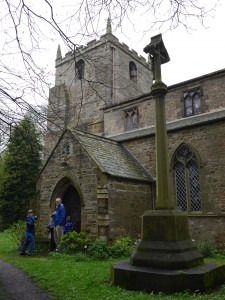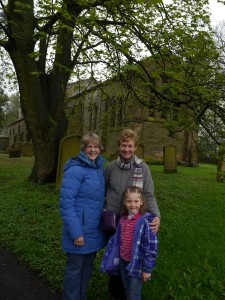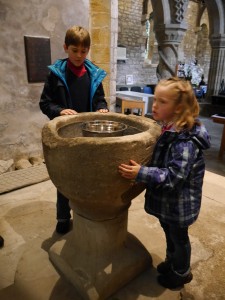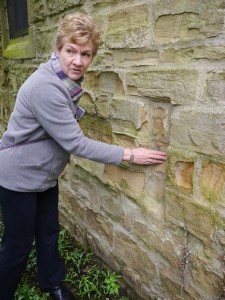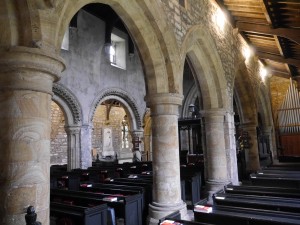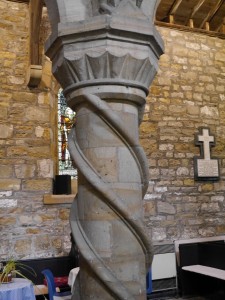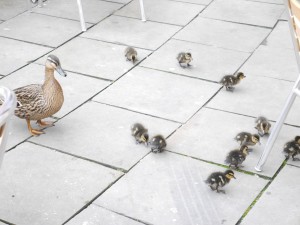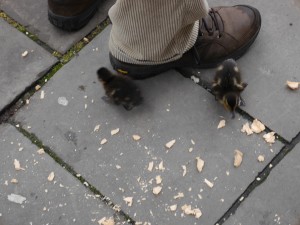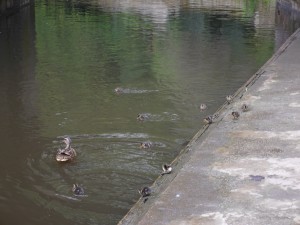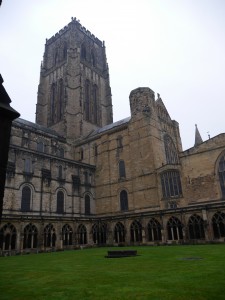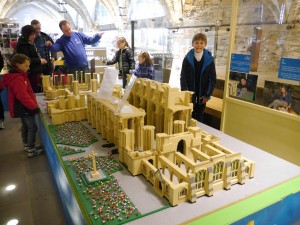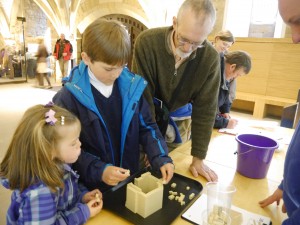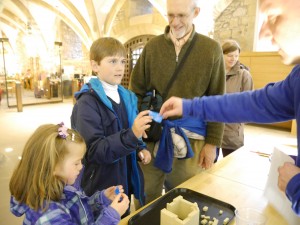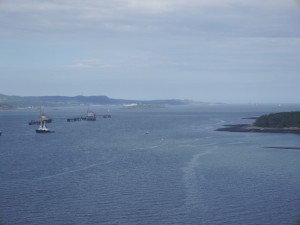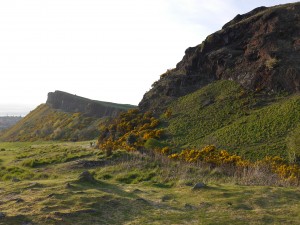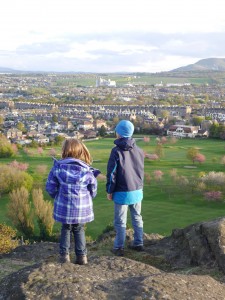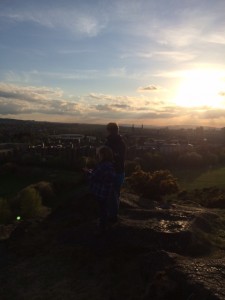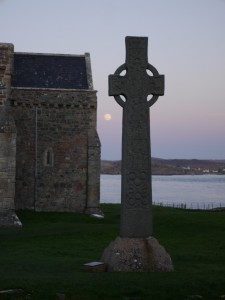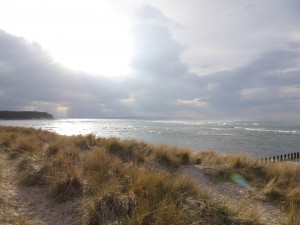
Looking north from Findhorn Village, where Findhorn Bay empties into Moray Firth and the North Sea
Every day of traveling along this sabbatical road brings its own twist of adventure and potential mishap, it seems. Yesterday provided a fistful of them.
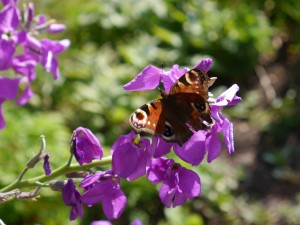 We enjoyed a warm and beautiful spring day on the edge of Moray Firth here at Findhorn yesterday, where northern Scotland meets the North Sea; a day accompanied by blossoming trees and flowers, birdsong, and t-shirt temperatures. The Frisbee came out of the bag, as did the mini-Rugby ball that’s been a favored companion ever since Kai spied it at the Trinity College gift shop in Dublin.
We enjoyed a warm and beautiful spring day on the edge of Moray Firth here at Findhorn yesterday, where northern Scotland meets the North Sea; a day accompanied by blossoming trees and flowers, birdsong, and t-shirt temperatures. The Frisbee came out of the bag, as did the mini-Rugby ball that’s been a favored companion ever since Kai spied it at the Trinity College gift shop in Dublin.
The long, twisting bus trip on HIghland roads from Oban to Findhorn the day before, including Loch Ness (FLASH: NO SIGHTING OF NESSIE) left Naomi and I grasping for motion bags (not the kind of adventure we anticipated!). After transfers at Fort William and Inverness, we had landed at last at the small town of Forres. As we stood at the bus stop contemplating what we would be doing during the hour and a half we must wait before the final five mile leg of our journey to Findhorn, an angel named Gordon, pulled to a stop next to us, rolled down his window and asked us where we were going. “Findhorn,” we replied, and he offered to take us there on his way home. Surprised and delighted at our turn of fortune, we piled in, luggage and all, and in less than 10 minutes we arrived at our destination. A wonderful grace.
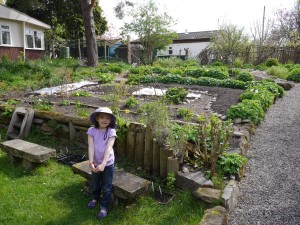
The garden that first made people take notice of the Findhorn Community
Our one full day at Findhorn Foundation’s Ecovillage was a delightful, if brief, sojourn. (Look for another post on our experience touring the village.) Now, with the approach of day’s end, we determined to make a brief foray to the little Village of Findhorn, a mile up the road, and to the rock and sand beaches beyond it that looked north through the Moray Firth toward Norway. We found the local bus schedule was amenable to our goal. Riding it into the old fishing village of Findhorn, it would loop back to pick us up again an hour later on its final run of the day. We paid for a roundtrip fare and hopped aboard for the short trip…Chris and I with our every present shoulder bags and Kai with his backpack with water and his camera.
We found the beach quickly, reveling in the dancing waves and in the light that streamed through clouds, leaving glistening patterns on distant surf. All too soon it was time to head back toward the village to catch the bus. Somewhere along the way, it occurred to me as I looked at Chris with her shoulder bag that I did not have mine. Where was it?! — back on the beach where I’d taken it off when we first reached the water’s edge! I turned and began sprinting back to the shore. That bag not only contained my wallet, credit cards, and all our cash, it also held our BritRail passes and all of our passports! There were a few folk walking the beach with us the few minutes before, might someone have come across it? I dared not contemplate the consequences that would unfold if the bag was gone. Fortunately, I found it just where I’d left it. Strike 1.
Relieved (and a bit winded) I took my time walking back to the family, discovering as I arrived that while my mini-drama was being played out, they had had their own. Naomi had fallen into some gorse (a plant similar in look to Scotch broom but with long, sharp and unforgiving thorns) and as a result had four thorns stuck in her hand. Temporary first-aid applied, we found our bus stop and it was then we discovered that Kai was without his backpack.
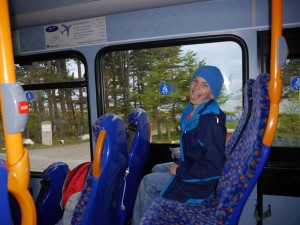
Kai, exuberant, upon discovering that his missing backpack was found by the bus driver
Chris quickly pulled out her camera and looked through the pictures to see where Kai last had the backpack on. It was before we had boarded the bus an hour before. He’d left it there, and none of us had noticed when we all got off. New crisis. There was nothing we could do except wait. We knew that the same bus and driver that had picked us up would be returning. And when, a few minutes later, it came around the corner, we sent up silent prayers that, against all odds, the backpack would still be aboard. As he pulled up, we saw it, right in front! He’d found it at the end of his previous run and knew it belonged to us. As we clambered on board for the second time, he said, “I was so hoping you would be here. I was prepared to wait an extra five minutes in the event you weren’t.” Again, relief, and prodigious thanks. “No problem,” he said, “it’s just part of the service.” Prayer answered. Strike 2.
Later the same evening, after the thorns were removed from Naomi’s hand and both kids were fast asleep, Chris and I turned to the internet to catch up on correspondence and confirm future reservations. It was just about midnight that I discovered an email from our B&B hosts Fiona and Tom in Edinburgh asking us to confirm our arrival time, but the date was wrong. Searching through past emails, I discovered that in my original request for an extra night’s lodging an Anoch Mor, I’d gotten the date wrong. How exactly I’d managed that I didn’t know, but there it was. We’d been expected there two nights before and were no-shows. It was too late to phone; all I could do was send an email apologizing for my error and enquiring if the one family room might still—against all odds—be available. Hitting SEND I headed to bed, casting prayers heavenward, both in thanksgiving for resolutions to the day’s crises and in supplication for this latest bungle.
Up quickly this morning, I rang Fiona and Tom. “Aye, Erik, Fiona sent you an email early this morning,” says Tom. “There’s no problem. These things happen. The family room is available and will be waiting for you when you arrive.” Three strikes. No outs. Thanks be to God!
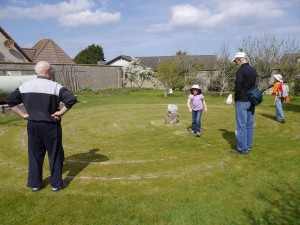
- Our angel, Gordon, gave us a tour of his home and garden, which included this backyard labyrinth, large crystals, sculptures as and a number of other tools for the spiritual journey

